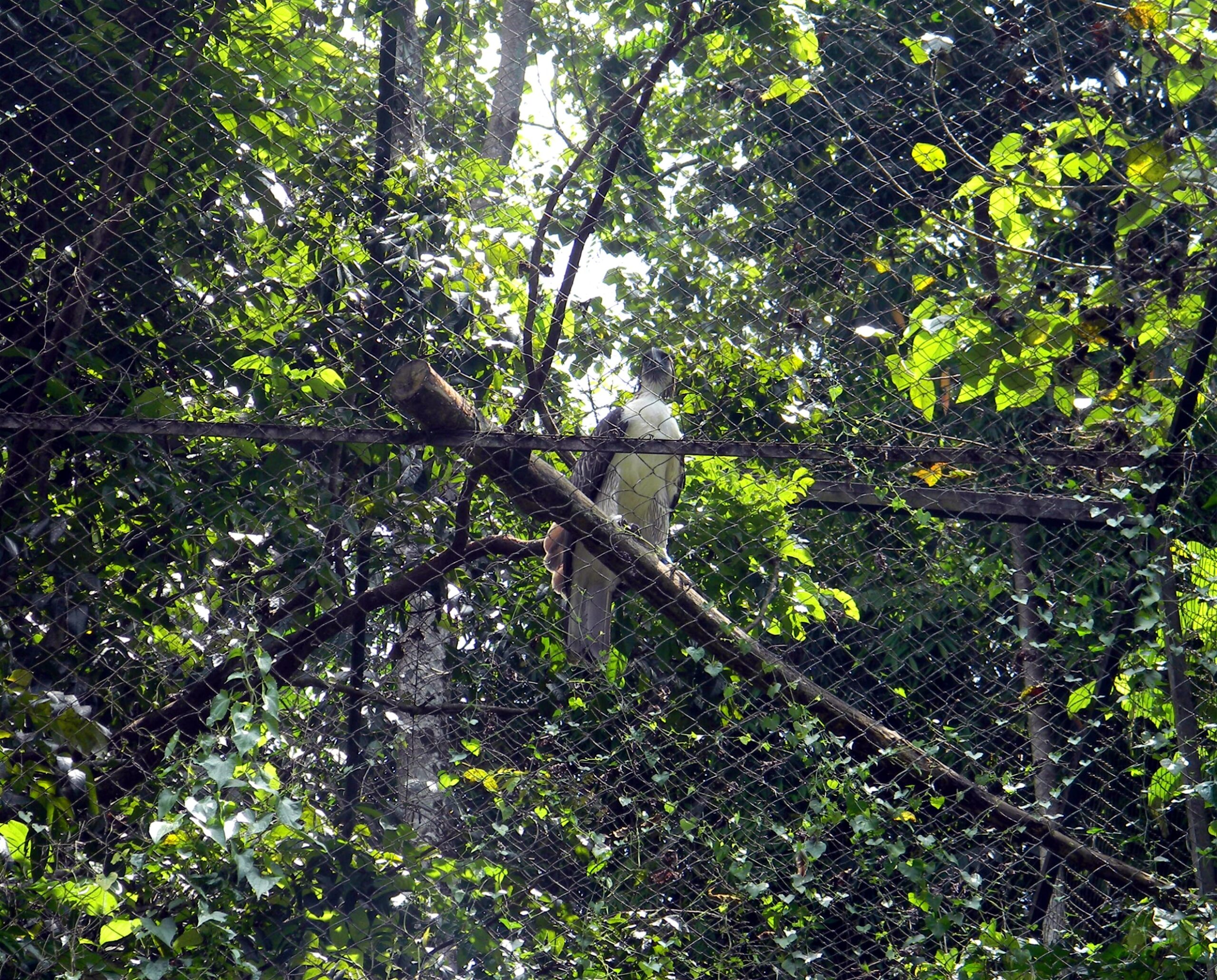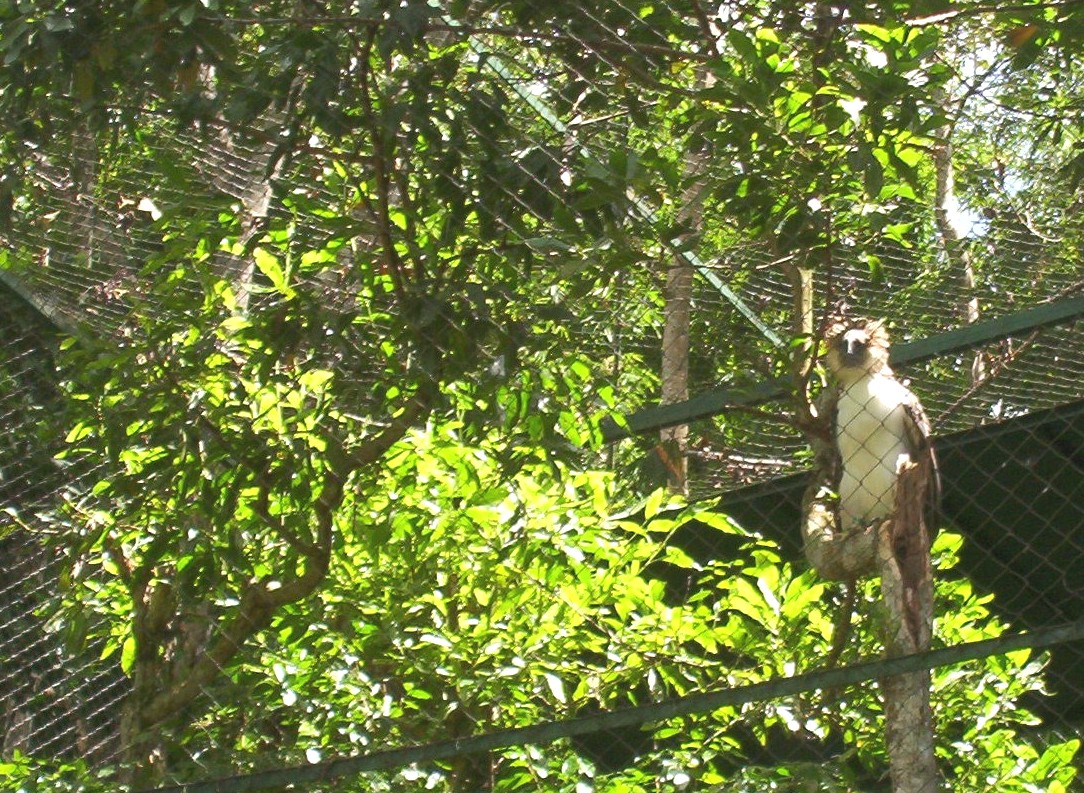Text and Photos by Henrylito D. Tacio
When I was still in high school, our teacher said that maya is our national bird. But when Fidel V. Ramos became our president, he signed Proclamation No. 615, naming the Philippine eagle as our bird icon.
With its elevation to national bird status, the Philippine eagle becomes the top of the priority list of the country’s wildlife conservation efforts. It has become the flagship for protection and conservation.
As our late president pointed out: “If the national bird dies, so will all our efforts at conserving its natural resources and treasures.”
Perhaps not too many Filipinos know that the Philippine eagle is one of the most powerful birds of prey. It is the second largest eagle species in the world – after South America’s Harpy eagle.
In the past, it was called monkey-eating eagle as natives told researchers then that the raptor preyed exclusively on monkeys. In fact, the generic name, “Pithecophaga,” comes from the Greek words “pithekos,” or monkey, and “phagein,” meaning eater.
A Presidential Decree – No. 1732, which was signed in 1978 – changed it to its present name when it was found out that monkeys comprise “an insignificant portion of its diet,” and that it consists mainly of flying lemurs, civet cats, bats, rodents, and snakes.


The Philippine eagle seems to stand out literally among other birds of prey. The Philippine Eagle Foundation (PEF), Inc. describes it this way: “It stands a meter high, weighs anything from four to seven kilograms, and has a grip three times the strength of the strongest man on earth.
“With a wing span of nearly seven feet and a top speed of 80 kilometers per hour, it can gracefully swoop down on an unsuspecting monkey and carry it off without breaking flight.”
The PEF is a private, non-profit, non-stock organization dedicated to saving the endemic eagle. It is the acknowledged leader in raptor and wildlife management in the country today.
“By using the Philippine eagle as the focal point of conservation, we are, in the process, saving wildlife and their habitat,” said PEF executive director Dennis Salvador.
The PEF’s Philippine Eagle Center (PEC) is located in Malagos, Calinan, some 30 kilometers northwest of downtown Davao. Here, several eagles are being induced to breed in captivity.
Now, PEF wants the eagle center to be transferred to another site for fear that the eagles might be infected with avian flu. “We fear it will happen if we don’t move our breeding Philippine eagle pairs to a new location,” said the PEF in a statement that was posted in its Facebook account.
The PEF cited the Asian Highly Pathogenic Avian Influenza (HPAI), Type A (H5N1), which is “harsh and fatal to the Philippine eagle.”
“Our national bird, despite how fierce it is, cannot protect itself from it,” PEF said.
If avian flu happened in the past, it will happen again. “It is likely for the avian flu to recur, and when it does, it can potentially wipe out our Philippine eagles in the PEC,” it said. “All it takes is a single case of infection and the only captive breeding population in the world of this already critically endangered species would be completely eradicated.”
Just how deadly is the avian flu, I visited the website of the US Centers for Disease Control and Prevention (CDC). It described the AI H5N1 as “a highly pathogenic and deadly strain for poultries.”
People may even be infected by it. “Asian H5N1 was first detected in humans in 1997 during a poultry outbreak in Hong Kong and has since been detected in poultry and wild birds in more than 50 countries in Africa, Asia, Europe, and the Middle East,” the CDC reported in its official website.
The Asian HPAI H5N1 is endemic in poultry of six countries: Bangladesh, China, Egypt, India, Indonesia, and Vietnam.
The Philippines is not spared from contamination. “The first wave of bird flu outbreaks in the country was recorded in Pampanga and Nueva Ecija in 2017,” the PEF stated.
In 2018, the Department of Agriculture (DA) declared the Philippines as “avian-flu free.” But it staged a comeback in 2020 in the same provinces, and this time it included Rizal. Again, the following year, the DA announced the virus was eradicated.
But in March this year, the virus returned, and for the first time, cases were reported in Laguna, Camarines Sur, and Tacurong City (in Sultan Kudarat). “The Tacurong case is the first avian flu outbreak recorded on Mindanao,” the PEF said.
Tacurong City is just 164 kilometers away from Davao City. The PEF is very alarmed by this situation.
“We cannot let another bird flu outbreak happen before we act on this,” the PEF urged. “We must transfer breeding eagles now to a more fortified location.”
When I visited the PEC recently, I was surprised to know that the female eagle lays once every two years. Both the mother and the father alternately incubate the egg for about two months. The female spends more time incubating the egg as the male hunts for food.
The area where the eagles should be transferred must be forested. In the wild, the eagle’s nest is approximately 80 feet above the ground in prominent mountain peaks overlooking a river or stream to give a good view of its territory.

